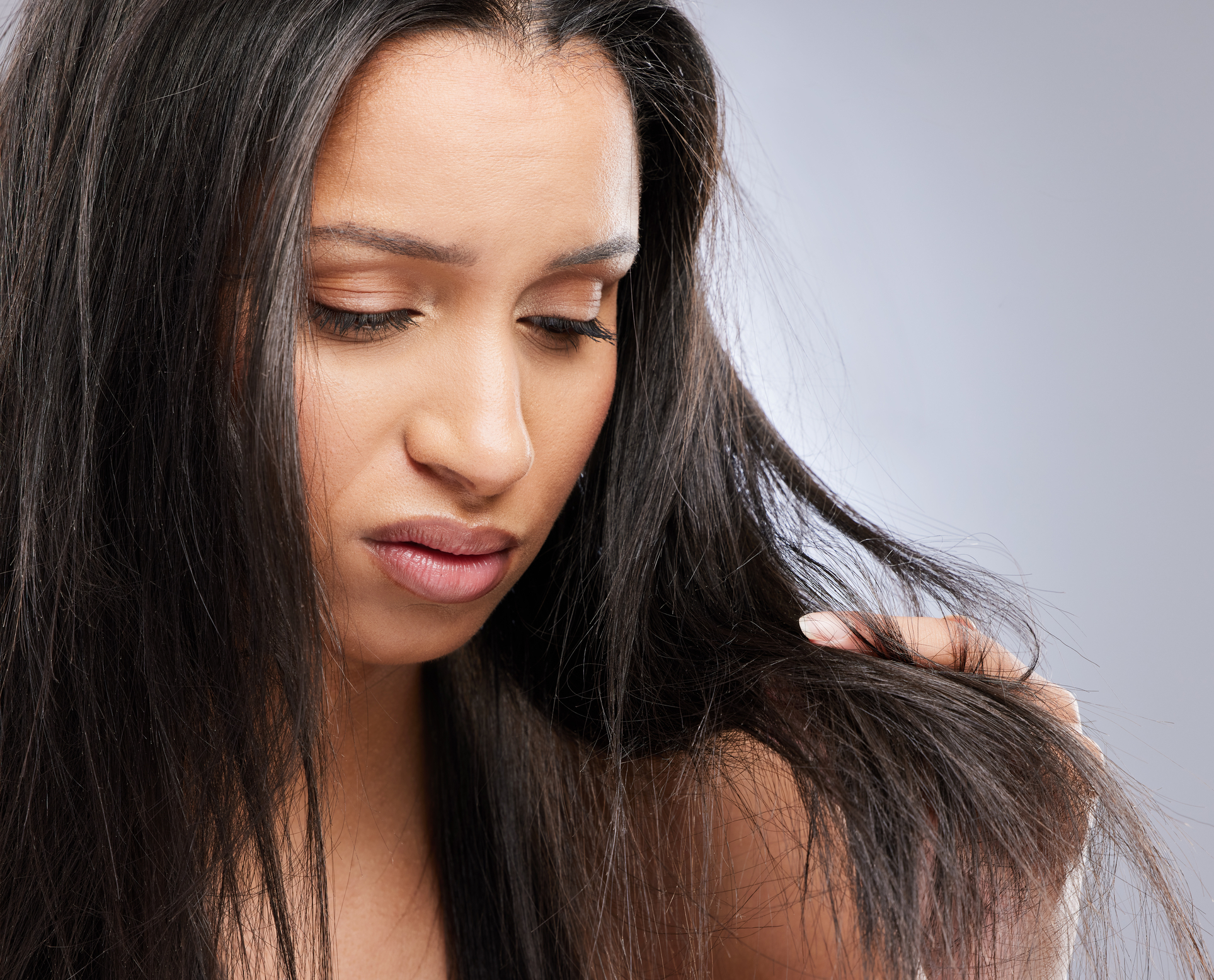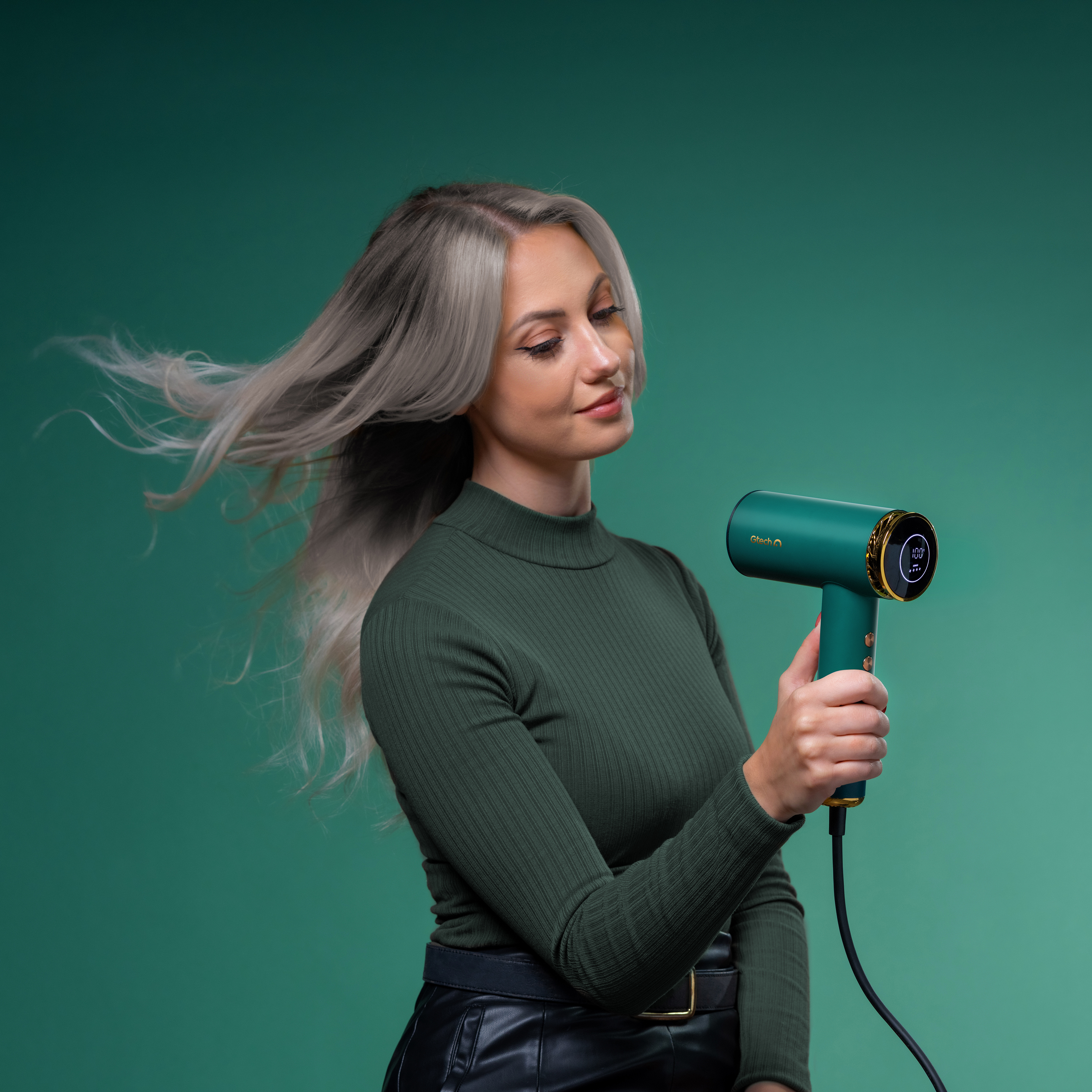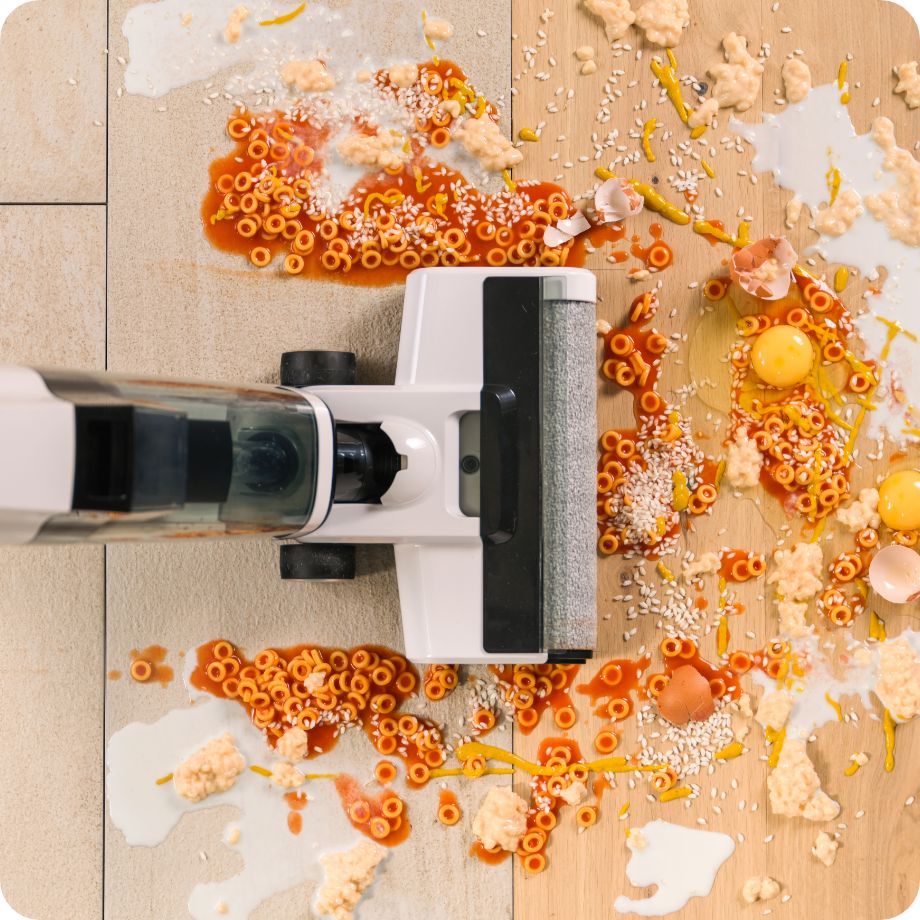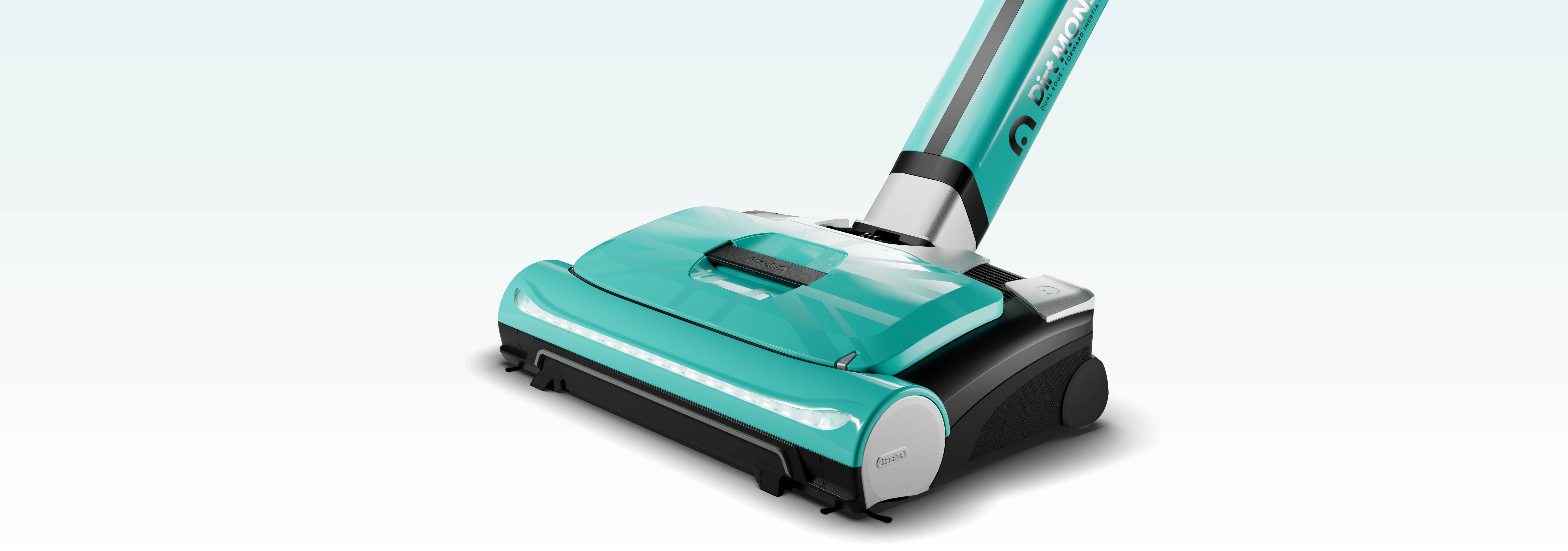From a quick blow-dry before work to a full styling session to prepare for a night out, heat is a common feature of our haircare routines.
In fact, our survey on haircare habits revealed that 48% of people use heat on their hair at least once a week. However, while these heating tools could provide that salon-ready finish, using them too often could cause heat-damaged hair.
In this article, we’ll chat through what heat-damaged hair looks like, as well as how you can keep your hair looking and feeling its best.
1. Dry hair
One of the first signs of heat-damaged hair is dryness. If your hair feels constantly parched, no matter how much conditioner you use, chances are heat styling is stripping it of its natural moisture.
When used too often, hair dryers, straighteners, and curling tools can dehydrate your strands, leaving them brittle and lacking their usual shine. You might also notice that your hair feels coarse, especially towards the ends, or that it’s harder to detangle after washing.
2. Split ends
Split ends are a telltale sign your hair is under stress. That’s because when your hair is exposed to high heat too often, the protective outer layer (known as the cuticle) starts to wear away. Without this barrier, the ends of your hair begin to split and fray.
If left untreated, these splits can travel further up the hair shaft, leading to even more damage. So, if your hair never seems to grow past a certain length, heat-related split ends might be the culprit.
3. Frizzy hair
While a common issue in the warm summer weather, frizz can also be linked with heat-damaged hair. The hot styling tools can strip the natural oils from your hair, with strands lifting and separating from one another, resulting in that frustrating frizzy finish.
You also may notice more flyaways as a result of heat-damaged hair, or that your usual smoothing products are becoming less effective.
4. Rough texture
Split ends and frizz might be what heat-damaged hair looks like up close, but what about how it feels? Well, rather than feeling soft or silky to the touch, your hair might take on a rougher, straw-like texture.
The rough-feeling texture is a sign that the inner structure has been compromised, most likely from too much exposure to heat. Even after conditioning, heat-damaged hair still feels stiff and scratchy to the touch.
5. Hair breakage
When your hair becomes weak from heat damage, it becomes more prone to breakage. As a result, you might notice short, snapped strands on your shoulders or a general lack of fullness in your hair.
Unlike hair loss, where the hair falls from the root, breakage happens along the shaft, creating uneven lengths and a lack of body. Styling, brushing, or even sleeping can cause these fragile strands to snap, once they’ve been weakened by heat.
6. Colour fading
If you’ve added highlights to your natural colour or looked to dye your grey hair , using heat styling tools too often can make the colour fade faster. That’s because heat lifts the protective outer layer of your hair, allowing the colour to escape more easily.
So, if you find that your colour seems to fade faster than usual – or even looks slightly dull after heat styling, then it could be a sign you need a cooler, more gentle approach to hair care.
7. Hair loss
While it’s typically only with more extreme cases, heat-damaged hair can lead to hair loss. We’re not just talking about shedding a few strands in the shower, either – constant exposure to high-heat can weaken hair at its root, causing it to fall out more easily.
If your hair feels noticeably thinner on top or your parting is becoming wider, you might need to rethink your haircare routine.
How to avoid heat-damaged hair
Now you know the signs of heat-damaged hair, what can you do to prevent them?
Well, the good news is we aren’t recommending you throw away your favourite styling tools! Instead, try the following steps:
- Always apply a heat protectant before styling
- Use the lowest effective heat setting on your styling tools
- Let your hair air dry partially before blow-drying
- Avoid going over the same section of hair multiple times
- Give your hair regular breaks from heat styling
Does heat protectant work?
Yes, heat protectant absolutely works. In fact, it’s one of the easiest ways to prevent heat-damaged hair. The protectant forms a barrier between your hair and styling tools, locking in moisture and reducing the effects of high temperatures.
However, according to our survey, only 16% of people currently use heat protectant in their haircare routine. So, if you haven’t added one to your line-up yet, now’s the time. A good protectant can make all the difference in maintaining your hair’s health and shine.
How long does heat protectant last?
While heat protectant typically lasts until your next wash, we recommend always reapplying it before using heat on your hair. Whether you’re using a straightener, curling iron or hair dryer, it’s important to coat your hair evenly every time. For blow-drying, apply the product to towel-dried hair and distribute it from root to tip to ensure all areas are protected before heat is applied.
How can Gtech help you avoid heat-damaged hair?
With our range of hair dryers, you can dry your hair quickly and gently – without exposing it to extreme heat. That’s because our lightning-fast IONIC technology reduces drying times, so your hair spends less time under extreme heat. What’s more, our hair dryers operate effectively on a lower heat setting, which means less damage to your hair’s natural moisture and structure.
So, whether you’re aiming for a sleek blowout or just need to finish a quick and easy hair style before heading out, Gtech gives you salon-quality results while helping you avoid heat-damaged hair. Explore our full haircare collection – which also includes hair straighteners - or head over to our blog for more expert tips and advice.




